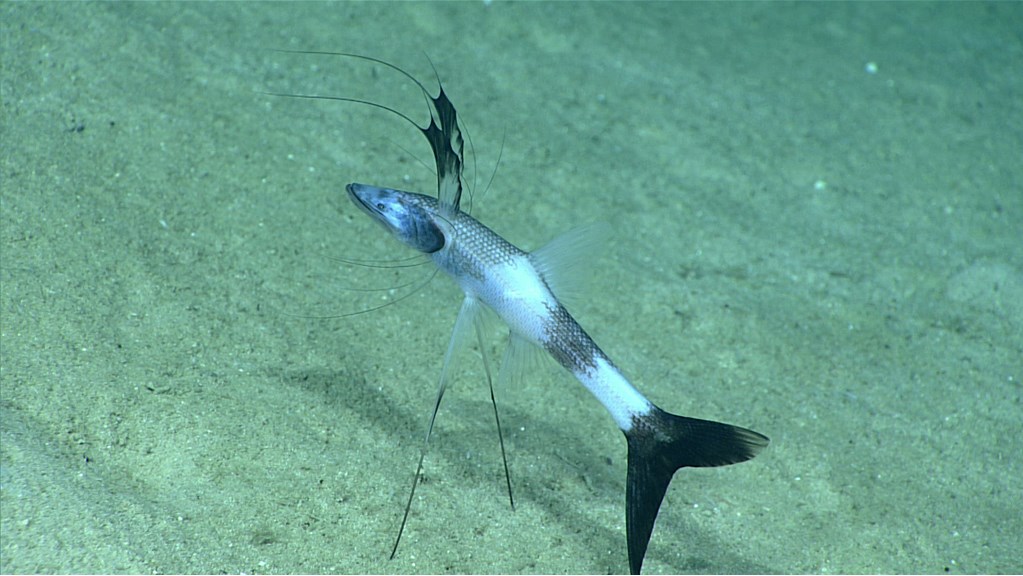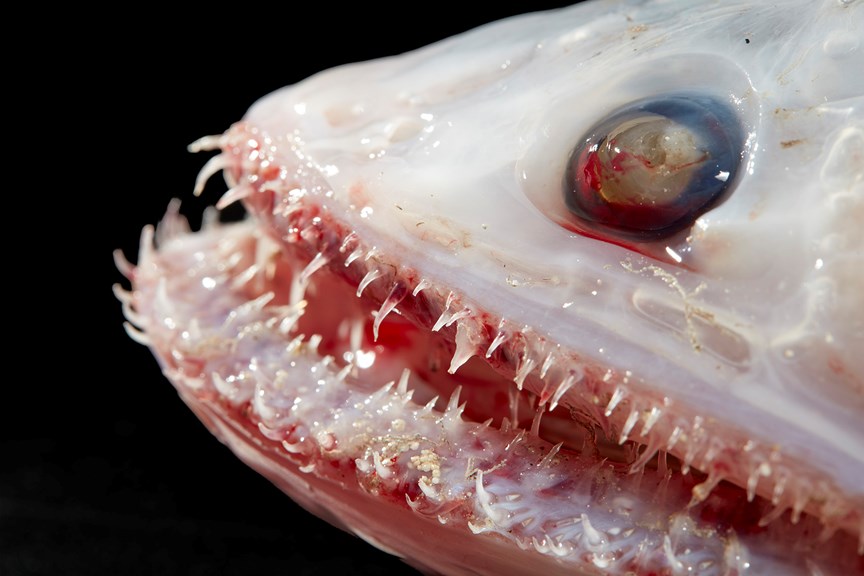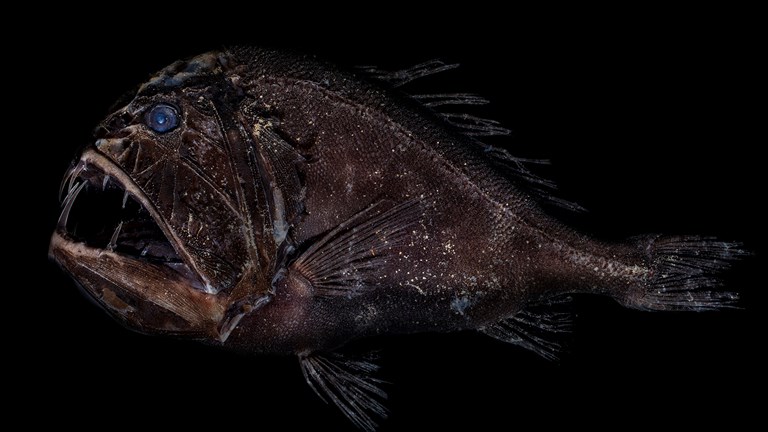Reproduction can be a lonely task for a deep sea fish
What does it take to reproduce in the cold, dark world of the deep sea where fish will not often find a mate?
The deep sea, thousands of metres below the surface, can be an inhospitable place for life.
‘Most of the ocean is abyssal plain, it’s that flat silty area between seamounts, ridges and rises,’ says Di Bray, senior collection manager of vertebrate zoology at the Museums Victoria Research Institute.
‘It’s really cold down there, maybe two degrees.
‘Food is scarce, and so animals are scarce.’
So, what is a fish to do in the largest habitat on Earth?
Well, first they need to sustain themselves before they think about reproducing.
And one of Di’s favourites has a unique way of going about getting a meal.
‘One of the fishes that I really like are tripod fishes, or spider fishes,’ says Di.
‘They’re those amazing fishes with long pelvic fin rays and they have a long ray on their tail fin.
‘They can stand high up off the sea floor on these fin rays, essentially as if they’re standing up on a tripod.’
And it is this unique strategy that gives them an advantage in the deep, where there is no light to see with.
‘Many of them have really elongated rays in their pectoral fins, which are the fins on the side of a fish that they use to swim with, and they face those forward into the water,’ says Di.
‘They’ve got sensory organs on the tips of their rays and they can actually feel the animals drifting by so they can feed on them.
‘They’ve got really tiny eyes so these sense organs are really important in allowing them to live down there,’ explains Di.
So, tripod fish are clearly well suited to finding food but what about a mate?
There are not always plenty of fish in the sea
‘There is something else that is pretty amazing about that whole group of spider fishes,’ says Di.
‘They are all simultaneous hermaphrodites.’
Which means as adults, they are both male and female.
‘So they have an ovotestes with functional male and female reproductive tissue in it,’ explains Di.
When they finally do meet another of their kind, there is no confusion over who is responsible for which part of the mating ritual.
Both can simply release eggs and sperm into the water to fertilise.
The group of spider fishes that make use of this rare trait are quite diverse.
‘They include grid eye fishes—weird things that have yellow photosensitive plates on tops of their heads.
‘And deep sea lizard fishes—fishes with mouths full of really nasty teeth,’ says Di.
‘It’s assumed they don’t fertilise themselves but perhaps they only need to meet one other animal to actually reproduce.
‘It’s a pretty neat reproductive strategy for life in a difficult environment.’
But how rare is it in the word of fish?
‘There aren’t that many fishes that are simultaneous hermaphrodites.
‘Many fishes are hermaphrodites—in fact most tropical reef fishes are hermaphrodites.
‘Most of our wrasses, including blue gropers on our southern reefs in Australia, they’re hermaphrodites.
‘They live in a small family—a harem—with a dominant male and then a hierarchy of females.
‘If you take the dominant male away the most dominant female, over a period of several weeks will change and become a functional male.
‘So many fishes are hermaphrodites but simultaneous hermaphroditism isn’t that common in the wild.’
Keen to learn more about life in the deep sea?













